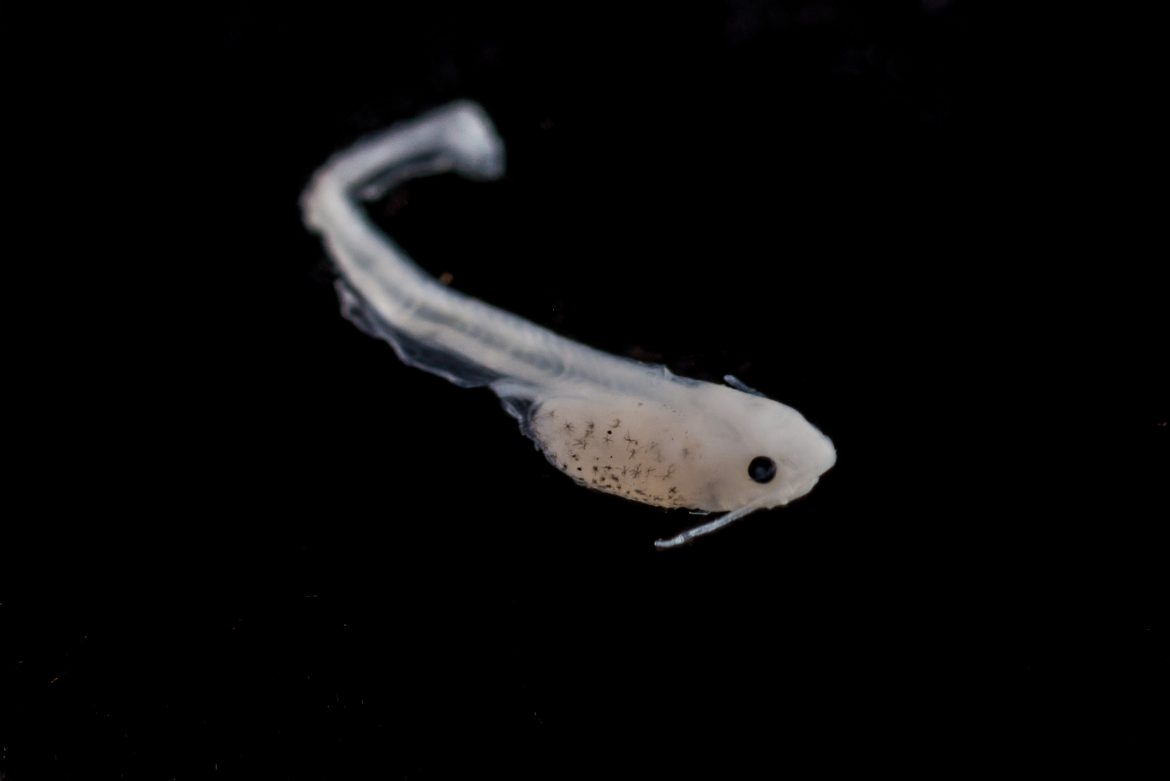

Fotography: Omar Torrico – WCS.
How to identify an important freshwater fish spawning area
Miranda-Chumacero et al. 2020 collects fish eggs and larvae to confirm a priority area for migratory fish conservation
The location and confirmation of a freshwater fish spawning area of at least 13 fish species in the Beni River basin is an important step towards integrated management of river basins. It is important because in order to conserve fish populations, we must know where and when crucial life history stages, like spawning or reproducing, occur. Yet, this is difficult information to acquire because many fish species, particularly those that are important to humans, are migratory, so studying them requires research across a large spatial and temporal scale. Looking to the experience described in this paper can help guide us in identifying more of these priority areas.
The first step is deciding where to look for the spawning area. If you fish for a living, it is very possible that you would be aware of where the fish you fish spawn. Strong relationships with local people mean that you may be able to ask for guidance. Lead researcher Guido Miranda told us, “Local fishermen told us that this was a good area because you could catch both male and female dorados (Brachyplatystoma rouseauxii), and that the piraibas (Brachyplatystoma filamentosum) didn’t reach the Andes. This helped us define our study area.” Once identified, research can begin on whether or not it is a spawning area.
Once you have a place, you can choose many ways to identify where and which fish are migrating. Here, ichthyoplankton (fish eggs and larvae) samples were collected using specialized nets, which were weighed down and held against the current for approximately 15 minutes. Eggs and larvae were then separated from other organic matter and then preserved so that DNA could be extracted and then sequenced for species identification. Using published information on embryo stages (how many days does the identified species or genus take to get to a certain stage) and water velocity of river, researchers were able to estimate how far upriver the egg may have been spawned. This is how researchers identified this expansive spawning area connecting national protected areas and indigenous territories, and reaching into the Andean foothills.

Upstream delimitation of the spawning area from the sampling point (yellow point), estimated from eggs at the morula-gastrula stages (red line), and from eggs at the final embryo stage (orange line). The map also indicates existing and potential threats in the area, as well as the Madidi and Pilon Lajas protected area limits and the location of indigenous territories (more information).
Overall, these species are important to local people’s food security, economic livelihoods, and culture.
Here are some specific results to highlight the importance of this spawning area:
♦ Cryptic diversity in Prochilodus species may lead to identification of new species in the basin – already a megadiverse region.
♦ Dams in the Madeira have already blocked off this region from the estuary, putting the long-distance migrants at risk since they can’t migrate the full length. The results of this study show that the resulting endangered gilded catfish is spawning in this area.
♦ Other areas in the Upper Madeira have already been destroyed by threats like gold mining (see Madre de Dios), and it stresses the importance of conservation here to maintain free-flowing connectivity and the ecological integrity of the spawning area, so that these migrating species have somewhere to go.
Once the spawning area is identified, we can do the work of conserving the spawning area. The authors outline the following steps for this basin in particular:
♦ Maintain the free-flowing Beni, Madre de Dios, and Mamoré, avoiding construction of dams.
♦ Declare a fishing ban in the Upper Madeira for the most threatened fish species (such as the goliath catfishes). This will also lower mercury consumption from large-bodied species in the context of gold mining.
♦ Regulate and zone extraction of gravel and stone – moving gravel and stone haphazardly can erode and change the shape of the river, making it harder for the species to migrate and survive.
♦ Understand better the impact of agro-industrial waste and gold extraction in this area via research – these are livelihood activities so understanding them will help us maintain balance.
♦ Strengthen monitoring systems – for both fishing and larvae.
♦ Use science to meaningfully involve local peoples in the monitoring and conservation of their important fish species.

—
By: Natalia Piland.



